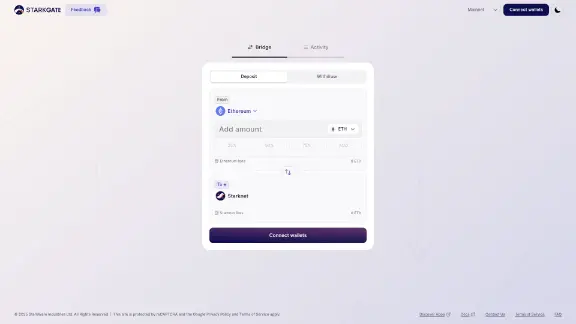Bridged Ether (StarkGate) (ETH)
Bridged Ether on Starknet is a unique cryptocurrency token designed to mirror the value of Ethereum. It operates within the innovative framework of Starknet, a layer 2 scaling solution aimed at enhancing the efficiency and capability of the Ethereum blockchain.
Contract address for Bridged Ether on Starknet:
0x49d36570d4e46f48e99674bd3fcc84644ddd6b96f7c741b1562b82f9e004dc7

| Ticker | ETH |
| Category | Starknet Ecosystem |
| Website | https://starkgate.starknet.io/ |
| @Starknet | |
| Contract Addresses | |
|---|---|
| starknet | 0x49...c7 Copied! Copied! |
